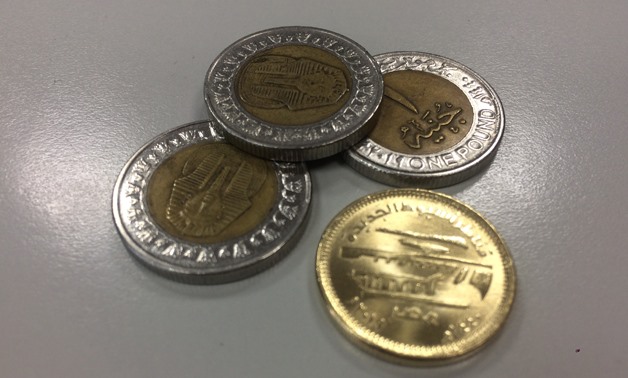
Egyptian Coins- Egypt Today/Samar Samir
CAIRO - 14 September 2022: The Egyptian Cabinet initially approved Wednesday a proposal to conclude a partnership agreement between the Public Treasury, the Egyptian mint, and the British Royal Mint.
The new agreement aims to establish a British-Egyptian mint in the Suez Canal economic zone (SCZone), as well as issuing and minting a LE 2 coin to be put into circulation.
In July 2022, the Central Bank of Egypt (CBE) issued plastic LE 10 notes. The new banknote was produced using the latest banknote production lines applied in the world in the new printing house in the Administrative Capital.
This step comes with an emphasis on not canceling any of the previous issues of the same denomination, and the continuation of its work and circulation, in light of the keenness to keep pace with the latest global and technological measurements in securing and printing the currency in circulation.
The CBE said in a statement that the introduction of the new currency comes within the framework of implementing the clean monetary policy, raising the quality rates of banknotes circulating in the Egyptian market, in addition to reducing the cost of printing banknotes, especially the most traded categories, in the long term due to the longevity of the paper, in line with sustainable development programs adopted by the state through Egypt's Vision 2030.
Plastic currencies are produced from polymer, and were first used as currency-making material in Australia in 1988.
Plastic money is characterized by flexibility, strength, and less thickness, which allows a longer life span of up to about 5 times the life of the paper category made of cotton, in addition to being water-resistant, less affected by dust, environmentally friendly, and much less likely to pollute compared to The denominations of paper money in circulation, in addition to the difficulty of counterfeiting and counterfeiting.
Banknotes are printed according to an economic calculation process that takes into account the rate of rise in prices of goods and services produced within the country, the "inflation rate", and the rate of economic growth achieved. "Banknotes" are printed on the basis of calculating the volume of "cash" circulating within the Egyptian economy.
The process of withdrawing worn-out banknotes from the market is carried out through the supervision of the Central Bank, by withdrawing the damaged banknote from the market and replacing it with new banknotes.
The money issued by the Central Bank enjoys what is called “the power of discharge” in the sense that it is equal in value to goods and services, and it is obligatory for all parties to pay for the value of the monetary category, and when the Central Bank issues a new edition with a different design, the old version of the monetary category is not stopped.
Comments
Leave a Comment